 W
WThe wine industry in the U.S. state of Alabama received a boost in 2002 when agricultural reforms lifted restrictions on wineries. Most wineries in the state focus on French hybrid grape varieties and the Muscadine grape, rather than Vitis vinifera grapes, which are vulnerable to Pierce's disease. There are no designated American Viticultural Areas in the state of Alabama.
 W
WAlaska wine refers to wine made in the state of Alaska. There are four wineries in Alaska, which produce mostly fruit wines made with fruits other than grapes. Some wineries produce an ice wine. There are no designated American Viticultural Areas in the state.
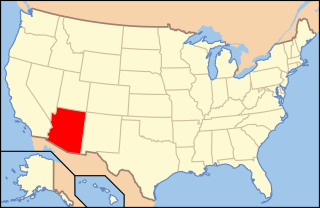 W
WArizona wine refers to wine made from grapes grown in the U.S. state of Arizona. There are three major regions of vineyards and wineries in Arizona:Verde Valley – north of Phoenix on SR-260 and SR-89A near Sedona Sonoita – south of Tucson on SR-83 Willcox – east of Tucson on the I-10
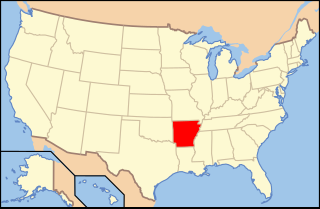 W
WArkansas wine refers to wine made from grapes grown in the U.S. state of Arkansas. Many of these wines are grown from traditional European wine grapes of the Vitis vinifera group such as Cabernet Sauvignon, Chardonnay, Pinot noir, and Riesling but Arkansas also makes wine from its native grapes, the Cynthiana and Muscadine.
 W
WCalifornia wine is wine made in the U.S. state of California, it supplies a vast majority of the American wine production, along with New Mexico wine these American wine regions are longtime examples of viticulture within New World wine. Almost three quarters the size of France, California accounts for nearly 90 percent of production, the production of wine in California is one third larger than that of Australia. If California were a separate country, it would be the world's fourth largest wine producer.
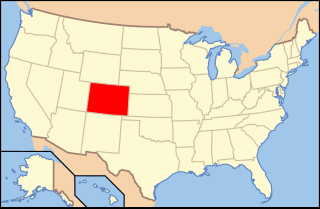 W
WColorado wine refers to wine made from grapes grown in the U.S. state of Colorado. Most of Colorado's vineyards are located on the western slope of the Rocky Mountains, though an increasing number of wineries are located along the Front Range.
 W
WConnecticut wine refers to wine made from grapes and other fruit grown in the U.S. state of Connecticut. The modern wine industry in Connecticut began with the passage of the Connecticut Winery Act in 1978. The wineries in Connecticut are located throughout the state, including in the three designated American Viticultural Areas in the state. The climate in the coastal region near Long Island Sound and the Connecticut River valley tends to be warmer than the highlands in the eastern and western sides of the state.
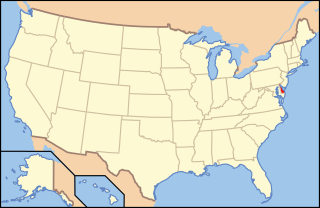 W
WDelaware wine refers to wine made from grapes grown in the U.S. state of Delaware. Historically, the first Swedish settlers planted grapes and made wine in Delaware as early as 1638.
 W
WFlorida wine refers to wine made from grapes and other fruit grown in the U.S. state of Florida. Wine grapes were grown in Florida earlier than anywhere else in the United States.
 W
WGeorgia wine refers to wine made from grapes grown in the U.S. state of Georgia. Georgia was an important winegrowing region of the United States in the 19th century, and by 1900 ranked sixth in production among U.S. states.
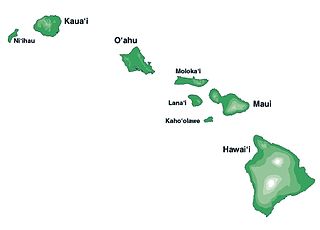 W
WHawaii wine refers to wine made from the U.S. state of Hawaii. The island of Maui is where the bulk of the state's wine is produced though there is some production on the island of Hawaii. The state mainly produces fruit wine such as a pineapple sparkling wine.
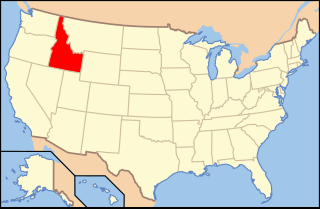 W
WIdaho wine refers to wine made from the U.S. state of Idaho. Idaho has a long history of wine production with the first vineyards in the Pacific Northwest being planted here in the 1860s. Like in other areas Prohibition in the United States virtually wiped out the Idaho wine industry in the early twentieth century, only to be resurrected in the 1970s. Today Idaho's wine industry is its fastest growing agricultural industry.
 W
WIllinois wine refers to any wine that is made from grapes grown in the U.S. state of Illinois. In 2006, Shawnee Hills, in southern Illinois, was named the state's first American Viticultural Area. As of 2008, there were 79 wineries in Illinois, utilizing approximately 1,100 acres (4.5 km2) of vines.
 W
WIndiana wine refers to wine made from grapes grown in the U.S. state of Indiana. Wine has been produced in the area since the early days of European colonization in the 18th century. In the mid-19th century, Indiana was the tenth-largest winegrape producing state in the country.
 W
WIowa wine refers to wine manufactured in the U.S. state of Iowa. Iowa presents many challenges to viticulture including very warm summer days that can promote fungal vine diseases, and extremely cold winter nights that can kill many varieties of grapevines. Most commercial viticulture in Iowa focuses on French hybrid and native American grape varieties, with relatively few plantings of Vitis vinifera grapes. Many Iowa wineries also import grapes and juice from other states and countries in order to produce wine varietals otherwise not possible due to Iowa's harsh winter months that will not permit such grapes to survive. Iowa is home to 100 commercial wineries and more than 300 vineyards covering 1,200+ acres. Northeastern Iowa is included in the Upper Mississippi Valley AVA.
 W
WKansas wine refers to wine made from grapes grown in the U.S. state of Kansas. In the nineteenth century Kansas was a significant grape-growing state. Its latitude, long, sunny growing season and soils ranging from limestone-laced to sandy, can provide favorable conditions for growing grapes if the suitable varieties are planted.
 W
WKentucky wine refers to wine made from grapes grown in the U.S. commonwealth of Kentucky. About 65 wineries operate commercially in Kentucky, with most recent plantings focusing on Cabernet Sauvignon, Chardonnay, and Cabernet Franc. Kentucky produced over two million gallons of wine in 2011 and is the largest wine-producing state by volume in the American South. Kentucky passed legislation in 1976 allowing wineries to operate, and tobacco settlement funds have provided Kentucky farmers the opportunity to once again explore grapes as a cash crop.
 W
WLouisiana wine refers to wine made from grapes grown in the U.S. state of Louisiana. Growing grapes in Louisiana is challenging which has hindered its wine industry. The climate of Louisiana is extremely hot and humid, and viticulturists in the state face Pierce's disease, powdery mildew, and other grapevine diseases. There are four commercial wineries in Louisiana that collectively produce about 20,000 gallons of wine per year. One of those commercial wineries is Landry Vineyards which is the largest vineyard and winery in Northeast Louisiana however it produces most of its wine by importing grapes from the west coast. To ensure that the Louisiana wine you are getting is actually made from Louisiana grapes or fruit look for "Louisiana" on the label. Another Louisiana vineyard is Pontchartrain Vineyards. Louisiana wine industry is small but growing.
 W
WMaine wine is made from fruit grown in the U.S. state of Maine. Most is made from fruit other than grapes, including apple, cranberry, and blueberry wines. A few wineries in Maine produce limited quantities of wine made from locally grown French hybrid grape varieties. Maine's climate is very cold for viticulture.
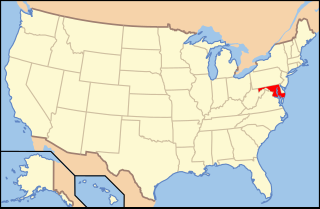 W
WMaryland wine is wine made in the U.S. state of Maryland. The industry has grown rapidly since the first winery in Maryland, Boordy Vineyards, opened in 1945. It is estimated that the industry contributes $50 million annually to the Maryland economy.
 W
WMassachusetts wine refers to wine made from grapes grown in the U.S. state of Massachusetts. Most of the wine grape vineyards and wineries in Massachusetts are located in the southern half of the state, within the boundaries of the Southeastern New England AVA. Although the coastal conditions moderate the cold climate, many wineries rely upon cold-hardy French hybrid varietals like Seyval, Vidal, and Marechal Foch. There are over 55 wineries in Massachusetts, and one designated American Viticultural Area, the Martha's Vineyard AVA, located entirely within the boundaries of the state.
 W
WMichigan wine refers to any wine that is made in the state of Michigan in the United States. As of 2018, there were 3,050 acres (1,230 ha) under wine-grape cultivation and 148 commercial wineries in Michigan, producing 3 million US gallons (11,000,000 L) of wine. According to another count there were 112 operating wineries in Michigan in 2007.
 W
WMinnesota wine refers to wine made from grapes grown in the U.S. state of Minnesota. Minnesota is part of the largest American Viticultural Area (AVA), the Upper Mississippi River Valley AVA, which includes southwest Wisconsin, southeast Minnesota, northeast Iowa, and northwest Illinois. The state also has a smaller designated American Viticultural Areas, the Alexandria Lakes AVA. Minnesota is a very cold climate for viticulture and many grape varieties require protection from the winter weather by being buried under soil for the season. Minnesota is home to extensive research on cold-hardy French hybrid and other grape varieties.
 W
WMississippi wine refers to wine made from grapes grown in the U.S. state of Mississippi. The hot and humid climate of Mississippi makes it very difficult to cultivate vitis vinifera or French hybrid grapes. The three commercial wineries in Mississippi focus almost entirely on the Muscadine grape, a variety also used for non-alcoholic grape juices, jams, and jellies. Most of the Mississippi Delta AVA, a designated American Viticultural Area, lies within the state boundaries of Mississippi.
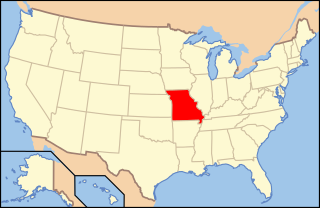 W
WMissouri wine refers to wine made from grapes grown in Missouri. German immigrants in the early-to-mid-19th century, founded the wine industry in Missouri, resulting in its wine corridor being called the Missouri "Rhineland". Later Italian immigrants also entered wine production. In the mid-1880s, more wine was produced by volume in Missouri than in any other state. Before Prohibition, Missouri was the second-largest wine-producing state in the nation. Missouri had the first area recognized as a federally designated American Viticultural Area with the Augusta AVA acknowledged on June 20, 1980. There are now four AVAs in Missouri. In 2017 there were 125 wineries operating in the state of Missouri, up from 92 in 2009.
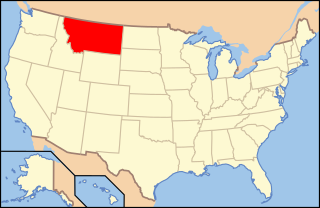 W
WMontana wine refers to wine made from grapes grown in the U.S. state of Montana. There are eight wineries in Montana, with most producing wine from fruits other than grapes or from grapes grown in other states, such as California, Oregon, or Washington. There are no American Viticultural Areas in Montana.
 W
WNebraska wine is wine made from grapes grown in the U.S. state of Nebraska. Nebraska's oldest winery was founded in 1994, and about thirty-five commercial wineries operate across the state. Wine quality varies across the state, however several wineries have won Best of Show titles during the States first 25 years of commercial wine production. Five of those titles were won with wines made of the states #1 wine produced from the Variety Edelweiss. Other wins were made with a dry Brianna, Vignole and a Marechel Foch Rose' wine. The vast majority of these wineries are small and sell most of their wine to tourists who visit the winery in person. The University of Nebraska–Lincoln has a program in viticulture. There are no designated American Viticultural Areas in Nebraska.
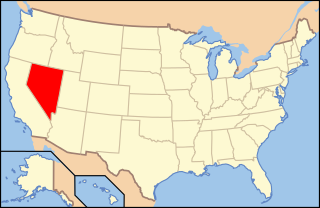 W
WNevada wine refers to wine made from grapes grown in the U.S. state of Nevada, where wine has been produced since 1990. There are currently no designated American Viticultural Areas in Nevada.
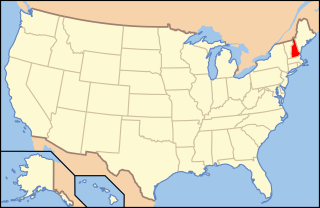 W
WNew Hampshire wine refers to wine made from grapes grown in the U.S. state of New Hampshire. The wine industry in New Hampshire began in 1994 when two wineries, Jewell Towne Vineyards and Flag Hill Winery, each produced their first vintages from locally grown grapes. Candia Vineyards started their test plantings in 1992, and full planting in 1998. New Hampshire continues to be growing wine-producing state, with new commercial wineries opening. The state currently has no American Viticultural Areas.
 W
WThe production of wine in New Jersey has increased significantly in the last thirty years with the opening of new wineries. Beginning in 1981, the state legislature relaxed Prohibition-era restrictions and crafted new laws to facilitate the growth of the industry and provide new opportunities for winery licenses. Today, New Jersey wineries are crafting wines that have earned recognition for their quality from critics, industry leaders, and in national and international competitions. As of 2019, New Jersey currently has 51 licensed and operating wineries with several more prospective wineries in various stages of development.
 W
WNew Mexico has a long history of wine production, within American wine, especially along the Rio Grande, from its capital Santa Fe, the city of Albuquerque with its surrounding metropolitan area, and in valleys like the Mesilla and the Mimbres River valleys. In 1629, Franciscan friar García de Zúñiga and a Capuchín monk named Antonio de Arteaga planted the first wine grapes in Santa Fe de Nuevo México, in what would become the modern Middle Rio Grande Valley AVA. Today, wineries exist in the aforementioned Middle Rio Grande Valley, as well as the Mesilla Valley AVA and the Mimbres Valley AVA.
 W
WNew York wine refers to wine made from grapes grown in the U.S. state of New York. New York ranks third in grape production by volume after California and Washington. Eighty-three percent of New York's grape area is Vitis labrusca varieties. The rest is split almost equally between Vitis vinifera and French hybrids.
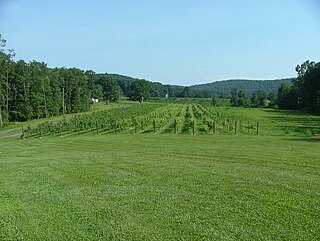 W
WNorth Carolina wine refers to wine made from grapes grown in the U.S. state of North Carolina. Wine has been produced in the area since the early days of European colonization in the 17th century. Wine growers in North Carolina were the first to cultivate a Native American grape variety, the Scuppernong, which produces a sweet wine, examples of which are still being made in the state. Most wine produced in North Carolina since the year 2000 is made from Vitis vinifera grape varieties, although French hybrid and Vitis labrusca varieties remain common.
 W
WNorth Dakota wine refers to wine made from grapes grown in the U.S. state of North Dakota. North Dakota was the last state in the United States since Prohibition to license a commercial winery. The first bonded commercial winery in North Dakota, Pointe of View Winery, was established on April 17, 2002. Pointe of View Winery has since been joined by a second winery, Dakota Hills Winery, but both wineries focus on wine made from fruits other than grapes. Red Trail Vineyard, North Dakota's largest, makes wines exclusively from its grapes.
 W
WOhio wine refers to wine made from grapes grown in the U.S. state of Ohio. Historically, this has been wine grown from native American species of grapes, not European wine grapes, although hybrid and Vitis vinifera grapes are now common in Ohio. As of 2018 there were 280 commercial wineries operating in Ohio, and there are five designated American Viticultural Areas partially or completely located within the state.
 W
WOklahoma wine refers to wine made from grapes grown in the U.S. state of Oklahoma. Wine production was a significant component of the Oklahoma agricultural economy in the 1920s. The industry was destroyed by the Dust Bowl of the 1930s and the introduction of Prohibition in the United States. Oklahoma currently has about 52 wineries. Most of the wineries are located in Green Country, Lincoln county and surrounding areas in east central Oklahoma, Central Oklahoma and Southwest Oklahoma.
 W
WPennsylvania wine refers to wine made from grapes grown in the U.S. state of Pennsylvania. The climate in Pennsylvania is mild compared to surrounding states, with the moderating effects of Lake Erie to the north and the Atlantic Ocean to the east. 119 wineries are located in all parts of the state, including five designated American Viticultural Areas. Pennsylvania is the eighth-largest wine producing state in the country.
 W
WRhode Island wine refers to wine made from grapes grown in the U.S. state of Rhode Island. Viticulture in Rhode Island began in 1663 when King Charles II of England included wine production among the land uses approved in the royal charter establishing Rhode Island as an English colony. The modern wine industry of Rhode Island began in 1975 when Sakonnet Vineyards was established near Little Compton. Located near the Atlantic Ocean, Rhode Island has one of the most moderate climates of the U.S. northeast.
 W
WSouth Carolina wine refers to wine made from grapes grown in the U.S. state of South Carolina. The climate of South Carolina is challenging for the production of wine grapes. Hot and humid summers require viticulturists to adapt their canopy management to minimize direct sunlight on the grapes, which are often harvested early in the summer. There are eleven wineries in South Carolina and no designated American Viticulture Areas.
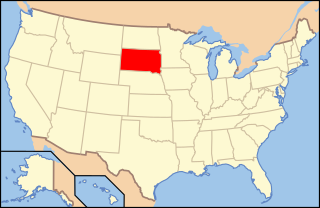 W
WSouth Dakota wine refers to wine made from grapes grown in the U.S. state of South Dakota. South Dakota has a small wine industry, which must contend with extremes of heat in the summer and cold in the winter. The only grape species that naturally performs well in South Dakota is Vitis riparia, a species not generally used for wine production. The wineries in South Dakota have focused exclusively on cold-resistant French hybrid grapes.
 W
WTennessee wine refers to wine made from grapes grown in the U.S. state of Tennessee. The state was home to a wine industry in the 19th century that was greatly impacted when Prohibition was introduced in the early 20th century. The modern Tennessee wine industry focuses on French hybrid and native grapes, which are more resistant to the fungal grapevine diseases that thrive in Tennessee's humid climate. Most of the wineries in the state are located in Middle and East Tennessee. A small portion of the Mississippi Delta AVA, a designated American Viticultural Area extends into the southwestern part of the state.
 W
WTexas has a long history of wine production. The sunny and dry climate of the major winemaking regions in the state have drawn comparison to Portuguese wines, in addition to other regions in Europe like Spain, France, and Italy. Some of the earliest recorded Texas wines were produced by Spanish missionaries in the 1650s near El Paso. Texas ranked as the fifth largest wine producing state by 2019.
 W
WUtah wine refers to wine made from grapes grown in the U.S. state of Utah. The first wine grapes were planted in Utah in the 1860s, soon after the initial settlement of the area by the Mormons. Viticulture was soon abandoned and not revived until the late 1980s. Most of the vineyards in Utah are located in mountain valleys, some as high as 6,000 feet (1,829 m) above sea level. Utah has a cold and dry climate, often requiring irrigation. There are no designated American Viticultural Areas in Utah.
 W
WVermont wine refers to wine made from grapes grown in the U.S. state of Vermont. The first commercial winery in Vermont, Snow Farm Winery, opened in 1997. Vermont is a very cold climate for viticulture. Vermont wineries have focused on using cold-hardy French hybrid grapes, but have been experimenting with some Vitis vinifera varieties. Some Vermont wineries produce wine made from grapes grown in other states, especially New York.
 W
WVirginia wine refers to wine made primarily from grapes grown in the commonwealth of Virginia. Wine has been produced in the area since the early days of European colonization in the 17th century. Virginia has hot humid summers that can be challenging to viticulture, and only within the last twenty years has the industry developed beyond novelty status. By tonnage, Vitis vinifera varieties represents 75% of total production. French hybrids varieties account for nearly 20% of total wine grape production in the commonwealth, while American varietals make up only about 5% of the total. As of 2012, the top 5 varietals produced are Chardonnay, Cabernet Franc, Merlot, Vidal blanc and Viognier.
 W
WWashington wine is wine produced from grape varieties grown in the U.S. state of Washington. Washington ranks second in the United States in the production of wine. By 2017, the state had over 55,000 acres (220 km2) of vineyards, a harvest of 229,000 short tons (208,000 t) of grapes, and exports going to over 40 countries around the world from the 940+ wineries located in the state. While there are some viticultural activities in the cooler, wetter western half of the state, the majority (99.9%) of wine grape production takes place in the shrub-steppe eastern half. The rain shadow of the Cascade Range leaves the Columbia River Basin with around 8 inches (200 mm) of annual rain fall, making irrigation and water rights of paramount interest to the Washington wine industry. Viticulture in the state is also influenced by long sunlight hours and consistent temperatures.
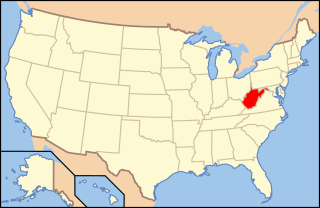 W
WWest Virginia wine refers to wine made from grapes grown in the U.S. state of West Virginia. West Virginia has 11 wineries located throughout the state, including three designated American Viticultural Areas. Because of the state's cold winter climate, most producers focus on French hybrid grape varieties. The most successful Vitis vinifera plantings are Riesling in the northeast portion of the state.
 W
WWisconsin wine refers to wine made from grapes grown in the U.S. state of Wisconsin. Wisconsin is part of the largest American Viticultural Area (AVA), the Upper Mississippi Valley AVA, which includes southwest Wisconsin, southeast Minnesota, northeast Iowa, and northwest Illinois. The state also has two smaller designated American Viticultural Areas, the Lake Wisconsin AVA and the Wisconsin Ledge AVA.
 W
WWyoming wine refers to wine made from grapes grown in the U.S. state of Wyoming. There are no designated American Viticultural Areas in Wyoming. The state has two commercial wineries, Table Mountain Vineyards in Huntley and Wyoming Wine in Sheridan. Table Mountain Vineyards is Wyoming's largest with a 10-acre (40,000 m2) vineyard and produced 3,000 gallons in 2007 from 100% Wyoming grapes. The winery helped pave the way for the Wyoming Grape and Wine Association (WGWA) which focuses on expanding and developing the Wyoming grape industry. Table Mountain Vineyards has paired up with several wineries in western Nebraska to promote wineries along the historic emigration trails, including the Oregon Trail.